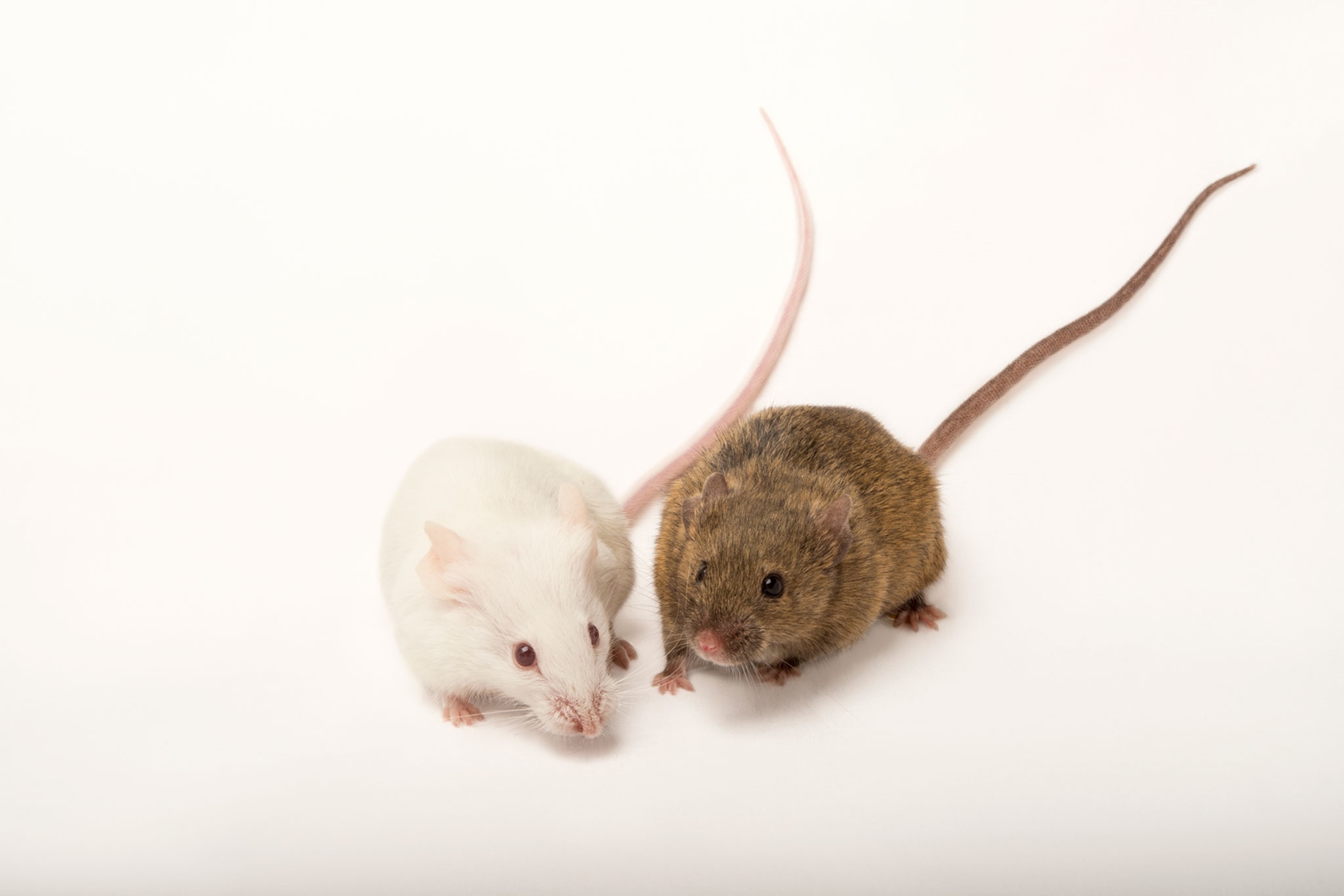
These Mice Spy on Their Predators—By Sniffing Their Tears
It's the first known example of prey picking up on a predator's pheromone and using it to avoid danger.
When you're prey, it pays to listen in on your predators.
A new study demonstrates that mice can "eavesdrop" on the pheromones used by rats to communicate. The study, led by Kazushige Touhara at the University of Tokyo, identifies a protein in male rats' tears that acts as a sex pheromone for rats and a warning signal for mice.
Male rats spread their tears over their body as they groom themselves, cloaking themselves in whatever chemical signals they contain. As the rodents go about their business, they leave an olfactory record of their passage. Touhara and his team were curious whether mice could pick up a signal left by rat tears. (Read why mouse tears are aphrodisiacs.)
The scientists used standard lab species: The Norway rat (Rattus novegicus) and house mouse (Mus musculus), both of which are common cohabitants in our towns and cities.
Though both are omnivorous rodents, rats have a well-documented tendency to kill and eat mice.
Scientists already knew that mice avoid rat urine, a typical prey strategy. But this paper is the first to show a prey species picking up a specific pheromone used by its predator and turning it into an early warning system.
Smelling a Rat
In the experiments, female rats spent more time investigating cotton soaked with ratCRP1 than the untreated cotton, whereas mice spent less time around it. (Watch what happens when you tickle a rat.)
Both species moved less after exposure, and further testing on the mice showed that they had lowered heart rates and body temperatures even an hour after exposure.

In their study, published today in Current Biology, Touhara and his colleagues propose that ratCRP1 is primarily a sex pheromone in rats, causing females to display interest and to linger in an area where a male had been.
Mice, on the other hand, also pick up the signal, but instead enter a cautious, more sedentary state to avoid attracting attention from any nearby rats.
Furry Spies
Tristram Wyatt, zoologist at the University of Oxford and expert in pheromones, says there's a strong evolutionary incentive for species to learn to listen in on their neighbors.
"As soon as you have a broadcast signal," Wyatt says, "other species can evolve a sensitivity to exploit that signal."
Touhara calls it the "game of the animal kingdom"— attempting to communicate with your allies without letting your enemies know what you’re up to. (Here's what a rat looks like when it's happy.)
Consider the auditory arms race between moths and bats. Moths have, on multiple occasions, evolved ears attuned to the frequencies bats use to echolocate, and will escape when they sense a bat's ultrasonic pulses.
Despite this being a common phenomenon, in theory, "relatively few studies have been performed of prey responding specifically to the pheromones of predators," Wyatt says.
Touhara and his team not only identified a new protein and its effects on behavior, but also mapped neural activity to show that ratCRP1 was triggering a defense circuit in mice brains, he notes.
For Touhara, he says "the next question is how this signal has evolved to be utilized as both intra- and inter-species signals.
Related Topics
You May Also Like
Go Further
Animals
- What La Palma's 'lava tubes' tell us about life on other planetsWhat La Palma's 'lava tubes' tell us about life on other planets
- This fungus turns cicadas into zombies who procreate—then dieThis fungus turns cicadas into zombies who procreate—then die
- How can we protect grizzlies from their biggest threat—trains?How can we protect grizzlies from their biggest threat—trains?
- This ‘saber-toothed’ salmon wasn’t quite what we thoughtThis ‘saber-toothed’ salmon wasn’t quite what we thought
- Why this rhino-zebra friendship makes perfect senseWhy this rhino-zebra friendship makes perfect sense
Environment
- What La Palma's 'lava tubes' tell us about life on other planetsWhat La Palma's 'lava tubes' tell us about life on other planets
- How fungi form ‘fairy rings’ and inspire superstitionsHow fungi form ‘fairy rings’ and inspire superstitions
- Your favorite foods may not taste the same in the future. Here's why.Your favorite foods may not taste the same in the future. Here's why.
- Are the Great Lakes the key to solving America’s emissions conundrum?Are the Great Lakes the key to solving America’s emissions conundrum?
- The world’s historic sites face climate change. Can Petra lead the way?The world’s historic sites face climate change. Can Petra lead the way?
History & Culture
- Hawaii's Lei Day is about so much more than flowersHawaii's Lei Day is about so much more than flowers
- When treasure hunters find artifacts, who gets to keep them?When treasure hunters find artifacts, who gets to keep them?
- Meet the original members of the tortured poets departmentMeet the original members of the tortured poets department
- When America's first ladies brought séances to the White HouseWhen America's first ladies brought séances to the White House
Science
- Should you be concerned about bird flu in your milk?Should you be concerned about bird flu in your milk?
- Here's how astronomers found one of the rarest phenomenons in spaceHere's how astronomers found one of the rarest phenomenons in space
Travel
- Are Italy's 'problem bears' a danger to travellers?Are Italy's 'problem bears' a danger to travellers?
- How to navigate Nantes’ arts and culture scene
- Paid Content
How to navigate Nantes’ arts and culture scene - This striking city is home to some of Spain's most stylish hotelsThis striking city is home to some of Spain's most stylish hotels
- Photo story: a water-borne adventure into fragile AntarcticaPhoto story: a water-borne adventure into fragile Antarctica



